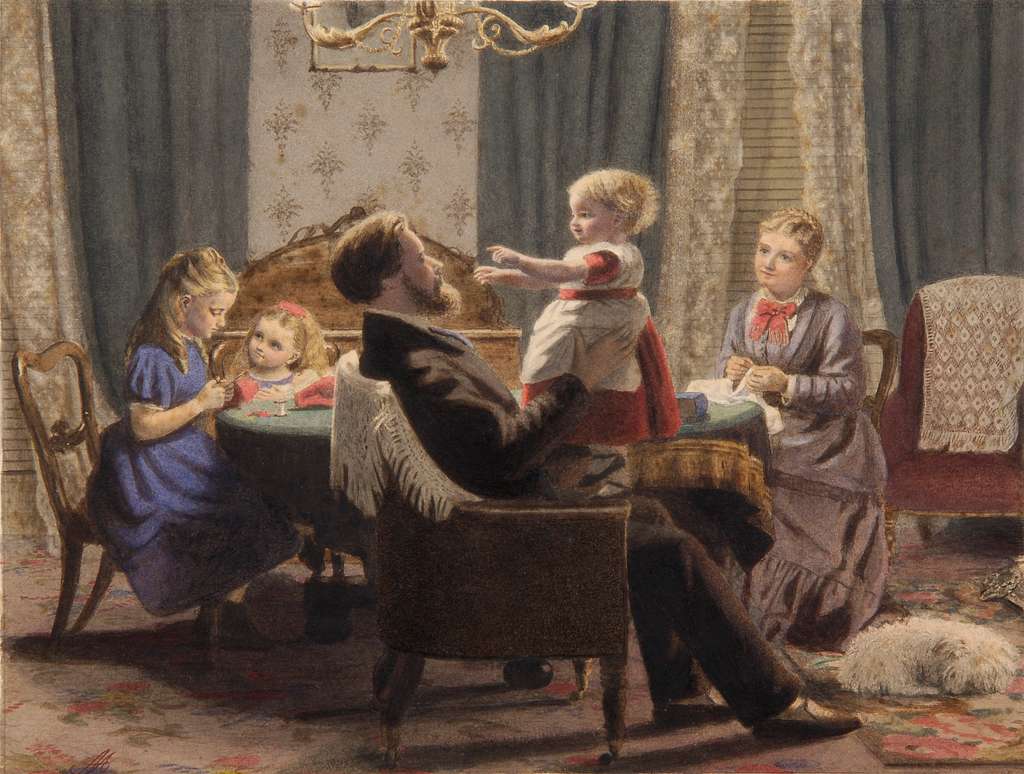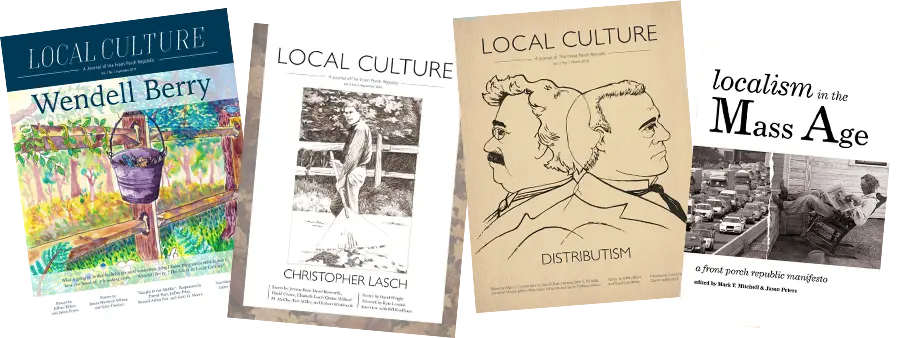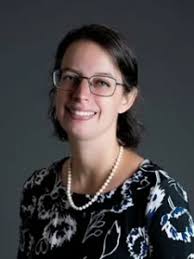The blockbuster film Wicked was recently released in theatres. It’s creating a sensation among older children and teens—my big kids are obsessively playing the soundtrack and demanding to see the movie as soon as it is released on a streaming service. (Having a newborn makes going to the movies challenging at the moment). Loosely based on the book The Wizard of Oz, the plot explores the backstory of Elphaba, the Wicked Witch of the West. The plot’s emphasis on individuality, psychological development, and trauma is a reflection of twenty-first century America’s fascination with those themes. I’m not opposed to my kids seeing it. However, the central theme I most want them to internalize does not appear to be offered by Wicked–but it is in the 1939 classic film version of The Wizard of Oz.
Elite media sometimes gives the impression that home and family are no longer important American values in 2024. Zach Beauchamp, a left-leaning writer for Vox, penned an essay over the summer criticizing as “neopatriarchal” (or part of a modern system of patriarchy) “women who became social media evangelists for a family-first lifestyle.” Criticism of social media influencers is often well-deserved, but wanting to live a “family-first” life is a value shared by many women—and men—across the political spectrum. On the other side of the political divide, consider how conservative social media mogul David Portnoy attacked Senator J.D. Vance (now Vice-President elect) over family policy. Responding to a clip in which Vance argued families with kids should pay less in taxes, Portnoy wrote on social media: “This is … idiotic. You want me to pay more taxes to take care of other people’s kids? If you can’t afford a big family don’t have a ton of kids.”
The skepticism by media elites regarding prioritizing and supporting family life reflects a deeper class divide. In October, the think tank American Compass released results of a survey investigating the “American Dream.” The most popular choice by respondents? Living in an America “that is a great place to raise a family.” (There were numerous other options, including: “a great place to start a business” and “has the world’s highest standard of living.”) Wealthy Americans were more likely to describe the “American Dream” as “the opportunity to go as far as your talents … take you,” while the lower class preferred an America that (among other things) offers everyone the opportunity for “a job that supports a family.” Our ambitious elites prioritize opportunities to capitalize on their talents. The less wealthy want stable work that supports family life.
This lack of consensus over the importance of home and family is mostly a modern phenomenon. It used to be so obvious that our language is littered with sayings that are both profoundly true and almost trite about the importance of home: “home is where the heart is”; “east or west, home is best.” “There’s no place like home,” Dorothy tells us as she clicks her ruby slippers to leave the Emerald City and return to her aunt and uncle’s farm in Kansas. Oz is beautiful, exciting, and offers opportunities for endless adventures. In the movie, Dorothy departs this literally more colorful world to go back to the gray of her family’s impoverished farm in the Dust Bowl. What makes her do this? As the audience intuitively understands, it is love.
In 2024, Americans are much wealthier than the Depression-era viewers of The Wizard of Oz. However, as they’ve gained material wealth, they seem to have lost the universal understanding of the 1930s that good homes and loving families form the bedrock of a flourishing society. This is a dire error. Many in the United States are suffering from debilitating loneliness and a lack of human connection; a devastating problem plaguing both Red and Blue states alike. The Biden Administration’s Surgeon General Vivek Murthy released a report in 2023 titled Our Epidemic of Loneliness and Isolation, warning: “Loneliness and isolation represent profound threats to our health and well-being.” A supportive, loving home is one of the best defenses against this national crisis. But it is now increasingly rare. As Dr. Murthy points out, in 1960, only 13% of people lived alone. By 2022, this number had more than doubled to 29%. Similarly, the lack of a supportive home environment and strong family connections is part of the reason behind America’s many “deaths of despair.” As one essay published by Kay S. Hymowitz at the conservative think tank The Manhattan Institute noted, divorced and unmarried men are more likely to be alcoholics, drug addicts, or commit suicide. For example, divorced or unmarried men are “only 32% of the population…[but] a stunning 71% of opioid deaths.”
To be sure, not all Americans either want—or are able—to live in communal homes. My husband and I recently welcomed our fourth child into our 1,300 square foot home that already contained two rambunctious boys, a tornado of a toddler girl, and a barking puppy. I would be the first to say that this level of chaos is not for everyone. I sometimes consider measuring the ambient decibel level around here, but I have never worked up the courage. Still, everyone benefits when neighborhoods are filled with vibrant (this is my polite word for “noisy”), loving homes. A community with no children running around is perhaps quieter, but it is ultimately one that is dying. For those who live alone, the gift of hospitality is an invaluable one—both for the host and the recipient. Philosopher Brandon Warmke argues that hospitality “can make your home a refuge, not just for yourself, but for others.” Even for the solitary introverts among us who prefer not to host or attend dinner parties, creating a home, be it ever so humble, is often integral to the good life. As Cheryl Mendelson writes in Home Comforts: The Art and Science of Keeping House, “Th[e] sense of being at home is important to everyone’s well being.”
Similarly, many adults do not want—or are not able—to be mothers and fathers, or a connected member of an extended biological family. No one should ever be shamed for being single or finding themselves without family support. But in the twenty-first century, an era of “chosen family” and one in which many parents are desperately searching for help in raising children, the options are perhaps wider than before. I was recently touched to learn about an older woman who sought to be a surrogate grandmother for parents in her community who needed help. “Family” no longer need only be those connected by genetics. In an era of the “loneliness epidemic,” cures may be found in unexpected places.
Re-prioritizing the home and family is a cultural project, one that so far much of popular media seems disinclined to tackle. The rise of “tradwife” Instagram influencers is perhaps a dysfunctional attempt at filling this gap. If we’ve lost our cultural memory regarding how to create a good home, scrolling through (sometimes fake) pictures of one on social media can seem appealing. Additionally, there is much policymakers could do to help. But addressing this problem requires a bipartisan recognition that the home still matters. Politicians and economists have long focused on policy steps to increase GDP and workforce participation rates. These are worthy goals, but they discount the critical work that goes into making home and family life. Changing this dynamic requires a shift of perspective by elites that while career and marketplace consumption remain important, what we “produce” at home—family dinners, holiday get-togethers, tucking little kids into bed—is critical.
We can’t just click our ruby slippers to go home again. Still, there is much we can do to rebuild the social connections and sense of place we’ve lost. In pursuing that worthy goal, it would help to have a society-wide agreement on the importance of the project. Wicked, from what I can tell, is a fine film. But we are desperately in need of a collective vision of what it means to love our homes. Filmmakers: take note. In the meantime, we could start by re-watching The Wizard of Oz.
Image Via: GetArchive





2 comments
David Naas
The first victims of revolution and social upheaval are children and the poor. The rich can usually weather any crisis, and the “media elites”, provided they are on the winning side, fare well also. At least until the Thought Police begin to winnow.
Stephen Quilley
Love this. The house versus homes thing is implicit in Christopher Alexander’s pattern language and later work. My phd student Anna Beresford wrote her dissertation on developing a pattern language for traditional music and dance. We really need an explicit pattern language for home making – as well as community/place making; and for that matter marriage-making and ‘child-making’ (#formation)
Comments are closed.